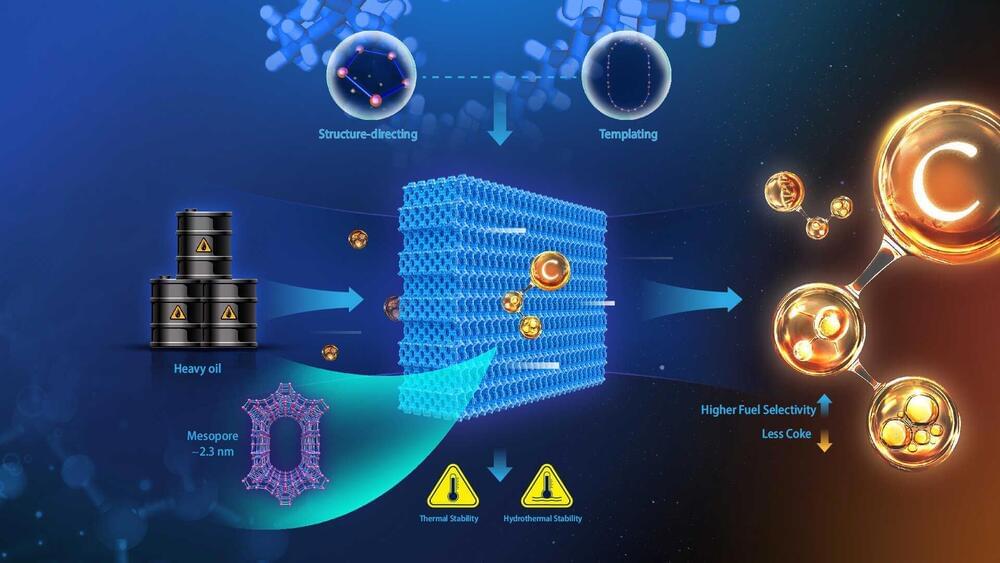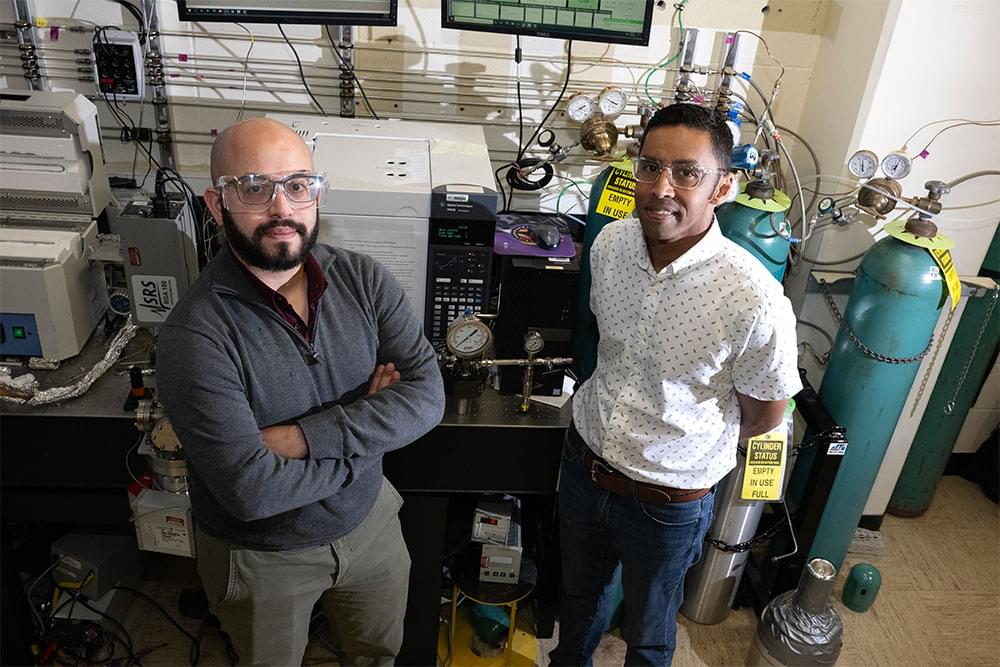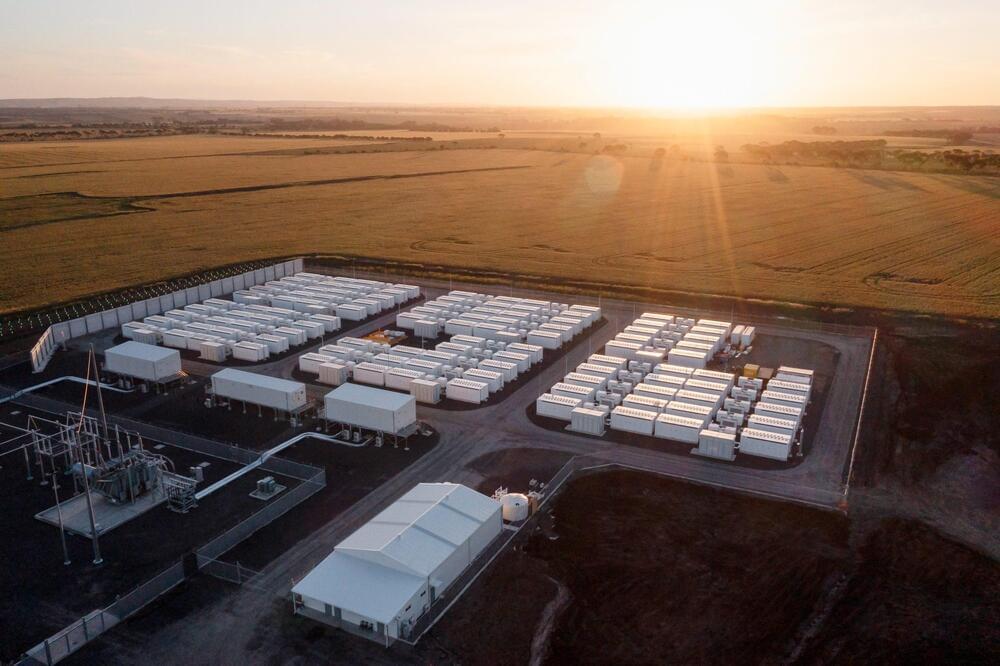A research team has succeeded in inserting a filiform molecule into the cavity of a ring-shaped molecule, according to a high-energy geometry that is not possible at thermodynamic equilibrium.



Although this might look like a sci-fi film prop, the Segway Apex H2 is nothing of the sort. It’s a prototype version of the render-only H2 concept first shown earlier this year, and it’s now been given a remarkably affordable price tag — 69,999 Chinese Yuan, which is about £8,000. So, it’s a little less than the recently launched Yamaha R7.
The H2 isn’t powered by anything as ordinary as a parallel twin combustion engine, however. It has two power sources — a hydrogen fuel cell and a battery pack. Technical details are still thin on the ground, but we do at least know it produces 60kW (just under 80bhp) and will crack 62mph in around four seconds, topping out at 93mph. It’ll consume a gram of hydrogen for every kilometre it covers.
Segway has revealed the prototype version of its Apex H2, and it appears to have changed little from the concept.

This is old, but still cool. Kristen Tapping, a student at london south bank university, has created a bicycle wheel with pollution filters that uses movement to actively purify the air. dubbed ROLLOE — roll off emissions — the wheel can take the busiest, most polluted roadways, and with zero energy, except for the pedal power from the cyclist, it aims to tackle one of the most pressing problems of the modern urban age: pollution.
ROLLOE — roll off emissions — uses pedal power from the cyclist to transform polluted air into clean one.

ZMQ-1, a novel aluminosilicate zeolite with interconnected meso-microporous channels, addresses limitations of traditional zeolites by enhancing stability and catalytic efficiency.
Researchers have developed a groundbreaking aluminosilicate zeolite, ZMQ-1, designed with a distinctive intersecting meso-microporous channel system. This innovation is poised to significantly improve catalytic processes in the petrochemical industry.
Published in Nature, the study presents ZMQ-1 as the first aluminosilicate zeolite featuring interconnected intrinsic 28-ring mesopores. This breakthrough addresses long-standing challenges in zeolite design, including limitations in pore size, stability, and catalytic efficiency.

British soldiers have successfully trialled for the first time a game-changing weapon that can take down a swarm of drones using radio waves for less than the cost of a pack of mince pies.
The Radio Frequency Directed Energy Weapon (RFDEW) development system can detect, track and engage a range of threats across land, air and sea.
RFDEWs are capable of neutralising targets up to 1km away with near instant effect and at an estimated cost of 10p per shot fired, providing a cost-effective complement to traditional missile-base air defence systems.

Warp Bubbles: Scientists May Have Found a Real Pathway to Light-Speed Travel. Here is some key information for you to watch before deciding to read the whole article. Thanks for visiting us!
In 2020, physicist Harold “Sonny” White discovered a peculiar energy pattern that resembled a potential nanoscale warp bubble—the first real hint toward faster-than-light travel.


It is important to have a mechanism that forms Mass, because if we had a concept of how Mass is formed it would give us a deeper understanding of gravity and help us unity Relativity and Quantum Mechanics.
In this theory Mass increases with speed, because Photon ∆E=hf energy is continuously transforming potential energy into the kinetic energy of matter in the form of electrons.
At low speed kinetic energy is one-half the mass times the velocity squared Eₖ=½mv², but at higher speed the curve for increasing energy starts to look just like the curve for increasing Mass.
This is why energy is equal to mass times the speed of light squared E=MC²
Kinetic energy is the energy of motion, of what is actually happening.
Energy and momentum are conserved as the future unfolds with each photon-electron oscillation or vibration.

Tesla’s Megapack grid-scale storage systems have been selected for yet another solar energy and storage project, this time set to be installed in Chile.
Chilean energy storage developer Colbún has announced plans to install over 200 Tesla Megapacks as part of the 228 MW/912 MWh Celda Solar project in the northern part of the country, as detailed in a press release shared this week. The site will be constructed in the Camarones, Arica and Parinacota region, and the company estimates the total cost to be around $260 million.
“Energy storage will play an increasing role in the Chilean electricity system, allowing solar energy generated during the day to be accumulated and supplied to the system at night,” writes José Ignacio Escobar, Colbún CEO, as translated into English from Spanish. “Our energy stored in the reservoirs in the south complements perfectly with the energy that we will store in our batteries in the north, thus having a safe, diversified and competitive offer for our clients from Arica to Puerto Montt.”